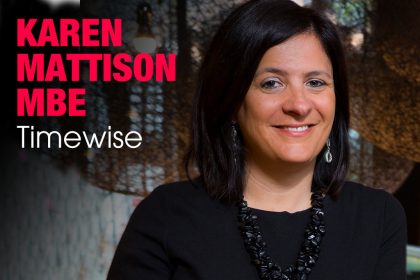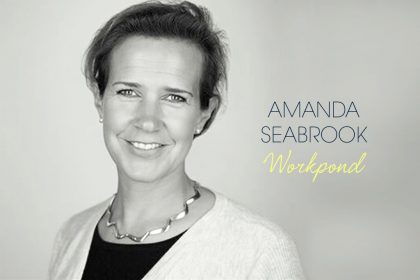Eight common mistakes charities need to avoid when recruiting
Do you need to recruit candidates to fill a job role in a charity? Find out if you’re making one of these common recruitment mistakes – and missing out on the best people.
Just like businesses, charities need to compete to attract the very best candidates to fill their job vacancies. And it’s a tough job.
Some candidates will instinctively prefer to apply for charity roles, and specifically a role at your charity because of what you are and what you do. But others won’t consider applying for a charity position because of their preconceptions about salary, career development and the professionalism of the sector.
So how can you make sure you attract the right people? Are your job ads grabbing their attention? And is your application process filtering the right people? If not you could be putting off and missing out on some of the best talent.
To help you find out if your recruitment process is scaring off your ideal employees, CharityJobs have put together eight common mistakes you need to avoid. Here they are.
1) Long and complex online application forms
A recent article in HR News revealed that 60-75% of job seekers (across all sectors) gave up on on-line applications because of their length or complexity.
From our own candidates, we have many comments around form filling and the endless duplication of information that’s already available to recruiters on their CV. Frequent gripes include:
- Tedious filling of boxes with standard information and no scope for creative, interesting applications.
- Websites that redirect me to other sites and want information that’s already on candidates’ CVs.
- Foreign qualifications that are difficult to translate.
If your application process is losing people halfway through, you’re missing the opportunity to pick from the best candidates. It could also damage your own reputation by creating poor word of mouth for your charity – one bad application experience spreads like a head cold on a commuter train.
If you don’t want people to quit, then you should try either asking candidates to apply with a CV plus a cover letter (rather than application form or redirection). Or asking them to apply through the recruitment site (without redirection).
If neither of those options are possible within your organisation, then we recommend you:
- Limit the number of screens to navigate.
- Reduce the time it takes to complete the application.
- Don’t ask applicants to re-enter work histories into fields in an applicant tracking system.
- Don’t make candidates lie or guess by having inappropriate Required Fields (i.e. requiring an exact month or even day date for the start of a job that may have been several years ago).
- Make sure applications are mobile-friendly.
- Ditch nice-to-have questions not needed at this first stage.
It’s simple really. Imagine you’re a candidate who has found two good-looking jobs and you have a couple of hours to apply for one of them, at home after a full day’s work.
One job requires a CV/cover letter which addresses the job description, the other redirects you to an on-line application form on another site that kicks off by asking for day and dates of your GCSEs. You have no idea how long the form is or how long it will take to complete. Which job would you go for? It really is that simple.
2) Not giving candidates the chance to shine
Endless box-filling can prevent good people from demonstrating just how good they are. And on-line application forms with restricted fields, don’t allow candidates to bring to the surface all their interesting and distinct qualities.
So, while your selection process clearly needs to eliminate people without the right skills or experience, equally it needs to have sufficient flex in to allow for an interesting application that lets the good ones shine.
Without the chance to really show off their skills, you could be losing (or overlooking) some of the most talented job seekers.
3) Asking for too much charity experience in your job description
Is it immediately obvious from your job ad or description what you’re after, and is it a recognisable role?
Your job title needs to be mainstream to ensure you’re attracting the most talented people from all sectors. If you make it too charity-specific you are putting off a lot of people with transferable skills.
When we asked our candidates what difficulties they’d encountered applying for jobs, by far the most common complaint was that either the title or the job description implied the job required specific charity experience.
But having worked within the sector is rarely given as a requirement, so candidates are getting this impression from either the job title or the description.
So is your description clear and focused? They should be “goldilocks-length” which is neither too short or too long. Between 250 and 2,000 words is the sweet spot.
Again, keep transferable skills in mind and don’t make it an exhaustive list of specific tasks. Ideally, you’ll want to write a job description that is impact focused and gives candidates an idea of what your organisation needs them to achieve.
Avoid charity sector jargon, acronyms and the names of specific or bespoke systems used by your organisation. These are things that they can learn in the moment and don’t have to be pointed out in the job description.
4) You don’t introduce yourself properly
It’s important to make it easy for candidates to know who you are and what you do hen advertising your role.
Providing a positive impression of the charity, its ethos and its culture can make a massive difference when it comes to getting the attention of the people you’d want to work for you.
Perception of fit is one of the strongest influences on an application outcome. All it really means is whether a candidate can see themselves working for you. So, if you’re to attract the kind of person who could fit and shape the future of your organisation, you need to sell the organisation in a way that’s both positive and accurate.
Consider including a mission statement or a short description of the aims of your charity. It can also help to provide stats, quotes or pictures to demonstrate the difference you’re making.
Exploit any opportunity offered by your recruitment site to inform candidates about the organisation. If they have a recruiter profile section, then use it and make sure that the advert is branded.
We offer all our recruiters the option of completing a Recruiter Profile page providing candidates with everything they need to know about the organisation, including its mission, values and vision.
It can be illustrated with pictures or collaterals from recent events and can include quotes – from staff and from those who’ve benefitted from the organisation’s work – as well as links to social media accounts.
These Recruiter Profiles resulted in a 62% increase in job views, a 77% increase in clicks and an increase of 47% in completed applications for the advertised vacancy.
5) Not being responsive to enquiries
As well as providing information about your organisation, our candidate feedback stresses the importance of the recruiter being responsive to any enquiries the candidate may have about either the job or the organisation – and making it easy to see how candidates can get in touch.
So, if possible, include a named person with email address or direct line for further information.
At all stages, it’s important to be courteous and to treat candidates well in terms of both being responsive, but also in terms of sticking to a closing date and informing candidates of outcomes quickly and appropriately.
6) You don’t mention the M word
There’s little point in placing an ad for a job anywhere if you don’t include at least the salary range.
When we asked our candidates, salary came second (after a “clear job description”) as a prompt to complete an application.
Yes, there are reasons why there may be some sensitivity about the salary – and at both ends of the pay spectrum:
- It’s “too much for a charity”.
- You may not want it known within your organisation (particularly if it’s an increase on the person leaving).
- You can’t afford to pay what you’d like.
And we know that candidates searching within the charity sector expect salaries to be lower than the private sector, but the range of pay is still huge – reflective of the variation in size and wealth of charities.
This variation makes it more important that you give a salary so that prospective candidates can make an informed decision – saving both them and you from wasting time later.
No indication of salary or just putting “competitive” is seen negatively by candidates – as is asking a candidate for their previous or current salary. These days that is a complete no-no.
Both of these things create a bad impression in terms of intent, professionalism and the seriousness with which you’re taking the role and employees. It is always better to at least include a scale or range.
If you can’t offer a competitive salary, then there’s more reason to promote clearly what your charity does and what else you can offer – from flexible working or other in-work benefits, to career development opportunities, training or invaluable on-job experience.
7) Not offering flexibility
Do you bend over backwards to provide flexible working opportunities or consider properly whether a job could be offered part-time or as a job share?
Our candidates tell us that mention of flexible working or part-time hours is a significant prompt to complete an application.
Of those candidates who use job type as a search criteria on our site, “permanent” is the most popular criterion, with “part-time” a close second. Currently only 6.14% of jobs advertised with us are part-time, despite 29.9% of our candidates having created an alert for this job type.
Nearly 70% of respondents to a recent CharityJob survey were women, with the biggest group being the 45-59 age group, followed next by the 30-44 age group.
Given the prevalence of more mature and experienced women looking for work in the charity sector, there’s every reason to include consideration of flexible working arrangements. They are more likely to have family or caring responsibilities which would benefit from some flexibility around hours, or working from home.
It may well be something you can afford to accommodate for the right candidate, so you lose nothing by including a mention that flexible working could be considered.
8) Not being seen in all the right places
There are more good jobs than there are good people. Which means candidates have a choice so, as well as making the application process straightforward and relatively quick, you need to make sure your jobs stand out and reach the right audience.
This is even more true for charities where you often can’t pay as much as organisations in the private sector. There isn’t the money or the time to waste on expensive ads or recruiter fees, so you need to make sure your jobs are seen in all the right places.
76% of our registered candidates put the cause above salary in their priorities when applying for a job. And we have an average of 107,000 job applications made each month from these motivated candidates who are actively searching for roles in this sector.
The broader point is, that in a busy market-place you need to make sure you’re meeting the right candidates and not over-paying on a campaign that’s too broad and fails to attract the best fit for you.
Are YOU putting off the perfect candidate?
At a time when good candidates can pick and choose, it’s worth reminding ourselves of the purpose of the application process. And reminding ourselves of what it’s not.
It’s not about ticking boxes, analytics reporting, or solely about the number of applicants. It’s about encouraging the skilled, motivated candidates who have sought out your organisation and your job opening, to complete. And to provide them with a means to show you how good they are that doesn’t reduce them to tears of frustration or, even worse, makes them give up on the application.
So if you’re making one or more of these mistakes, we recommend finding ways to correct it – and start attracting (and hiring) the perfect candidates for your charity!
Need to hire for a charity position? Find out how CharityJobs can help.










